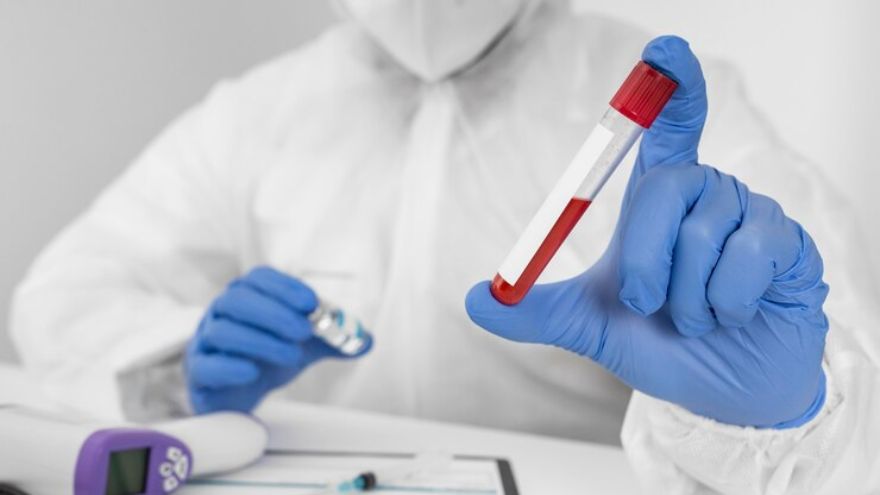
Human Metapneumovirus (HMPV) is a respiratory pathogen that, despite being lesser-known than its viral relatives like influenza or respiratory syncytial virus (RSV), plays a significant role in global respiratory illnesses. First identified in 2001, HMPV is part of the Paramyxoviridae family and shares similarities with RSV. It primarily targets the respiratory tract, affecting people of all ages but posing a higher risk to young children, the elderly, and immunocompromised individuals.
Let's delve into the characteristics, symptoms, transmission, diagnosis, treatment, and prevention of HMPV, offering a holistic understanding of this emerging pathogen.
Characteristics of Human Metapneumovirus
HMPV is an enveloped, single-stranded RNA virus. It is classified into two main genetic lineages, A and B, each further divided into sublineages. This genetic diversity contributes to the virus's ability to evade immunity, making reinfections possible.
The virus is structurally and functionally similar to RSV, and both target the respiratory epithelial cells. HMPV is known for causing seasonal outbreaks, particularly in late winter and early spring, mirroring the patterns of other respiratory viruses.
Symptoms of HMPV Infection
HMPV infections range from mild upper respiratory symptoms to severe lower respiratory tract diseases. Common symptoms include:
-
Mild Symptoms:
-
Cough
-
Nasal congestion
-
Sore throat
-
Low-grade fever
-
-
Severe Symptoms:
-
Wheezing
-
Difficulty breathing
-
High fever
-
Cyanosis (bluish discoloration of the skin due to lack of oxygen)
-
Pneumonia or bronchitis
-
In young children, HMPV often manifests as bronchiolitis, while in the elderly or those with weakened immune systems, it can lead to severe complications such as pneumonia. In some cases, HMPV infections are indistinguishable from those caused by RSV or influenza, highlighting the importance of proper diagnostic measures.
Transmission and Epidemiology of HMPV
HMPV spreads primarily through respiratory droplets from coughs or sneezes, direct contact with contaminated surfaces, or close personal interactions. The virus can survive on surfaces for several hours, increasing the risk of transmission in crowded settings like schools, daycare centers, and healthcare facilities.
Studies indicate that most individuals are exposed to HMPV by the age of 5, and reinfections are common throughout life. Seasonal outbreaks occur worldwide, with a peak incidence during the colder months. While the virus affects all age groups, the following populations are at higher risk of severe outcomes:
-
Infants and young children
-
Elderly individuals
-
Patients with underlying chronic diseases
-
Immunocompromised individuals, including organ transplant recipients and cancer patients
Diagnosis of HMPV
Diagnosing HMPV can be challenging due to its clinical similarity to other respiratory viruses. However, laboratory tests are essential for accurate identification. Diagnostic methods include:
-
Molecular Tests:
-
Reverse transcription polymerase chain reaction (RT-PCR) is the gold standard for detecting HMPV RNA.
-
-
Antigen Detection:
-
Rapid antigen tests can identify HMPV but are less sensitive than molecular tests.
-
-
Viral Culture:
-
Although effective, this method is less commonly used due to its time-consuming nature.
-
-
Serological Tests:
-
Detecting specific antibodies can help confirm past infections but is not useful for acute diagnosis.
-
Prevention Strategies
Preventing HMPV infections hinges on standard hygiene practices and public health measures. These include:
-
Hand Hygiene:
-
Regular handwashing with soap and water for at least 20 seconds.
-
-
Respiratory Etiquette:
-
Covering the mouth and nose with a tissue or elbow while coughing or sneezing.
-
-
Avoiding Close Contact:
-
Minimizing contact with sick individuals, especially during outbreaks.
-
-
Cleaning Surfaces:
-
Regularly disinfecting frequently-touched surfaces such as doorknobs, toys, and electronic devices.
-
-
Protecting Vulnerable Groups:
-
Implementing infection control measures in healthcare and long-term care facilities.
-
While no vaccine exists for HMPV, several candidates are under investigation. These efforts aim to provide long-term immunity, particularly for high-risk populations.
Conclusion
Human Metapneumovirus is a significant yet underrecognized cause of respiratory illnesses worldwide. Its impact spans all age groups, with severe outcomes in vulnerable populations. While progress has been made in understanding the virus, much remains to be done in terms of prevention, diagnosis, and treatment.
By prioritizing research, enhancing public health measures, and fostering global collaboration, we can mitigate the burden of HMPV and improve outcomes for those affected. Awareness and education are key to ensuring that this "hidden" pathogen receives the attention it deserves in the realm of respiratory health.
Related FAQ’s
Q1: Who is at risk of severe HMPV infections?
High-risk groups include infants, young children, elderly individuals, and those with weakened immune systems or underlying chronic conditions.
Q2: How is HMPV transmitted?
The virus spreads through respiratory droplets, direct contact with contaminated surfaces, or close personal interactions. It is particularly contagious in crowded or enclosed spaces.
Q3: What are the symptoms of HMPV infection?
Symptoms can vary from mild (cough, nasal congestion, low-grade fever) to severe (wheezing, difficulty breathing, pneumonia).
Q4: How is HMPV diagnosed?
HMPV is diagnosed using laboratory methods like RT-PCR, antigen detection, or serological tests. Molecular tests are the most reliable.
Q5: Is there a treatment for HMPV?
There are no specific antiviral treatments for HMPV. Management involves supportive care, including hydration, oxygen therapy, and medications to relieve symptoms.
Q6: Can HMPV infections be prevented?
While no vaccine is currently available, prevention strategies include good hand hygiene,
Q7: Can Human Metapneumovirus cause death?
Yes, HMPV can cause death, particularly in high-risk groups such as young children, the elderly, and immunocompromised individuals. Severe infections can lead to complications like pneumonia and respiratory failure, which may be fatal without timely medical intervention.
Q8: How long does it take to recover from Human Metapneumovirus?
Recovery from HMPV typically takes about 1 to 2 weeks for mild cases. Severe cases, especially those requiring hospitalization, may take longer to recover, depending on the individual’s overall health and the severity of the infection.



